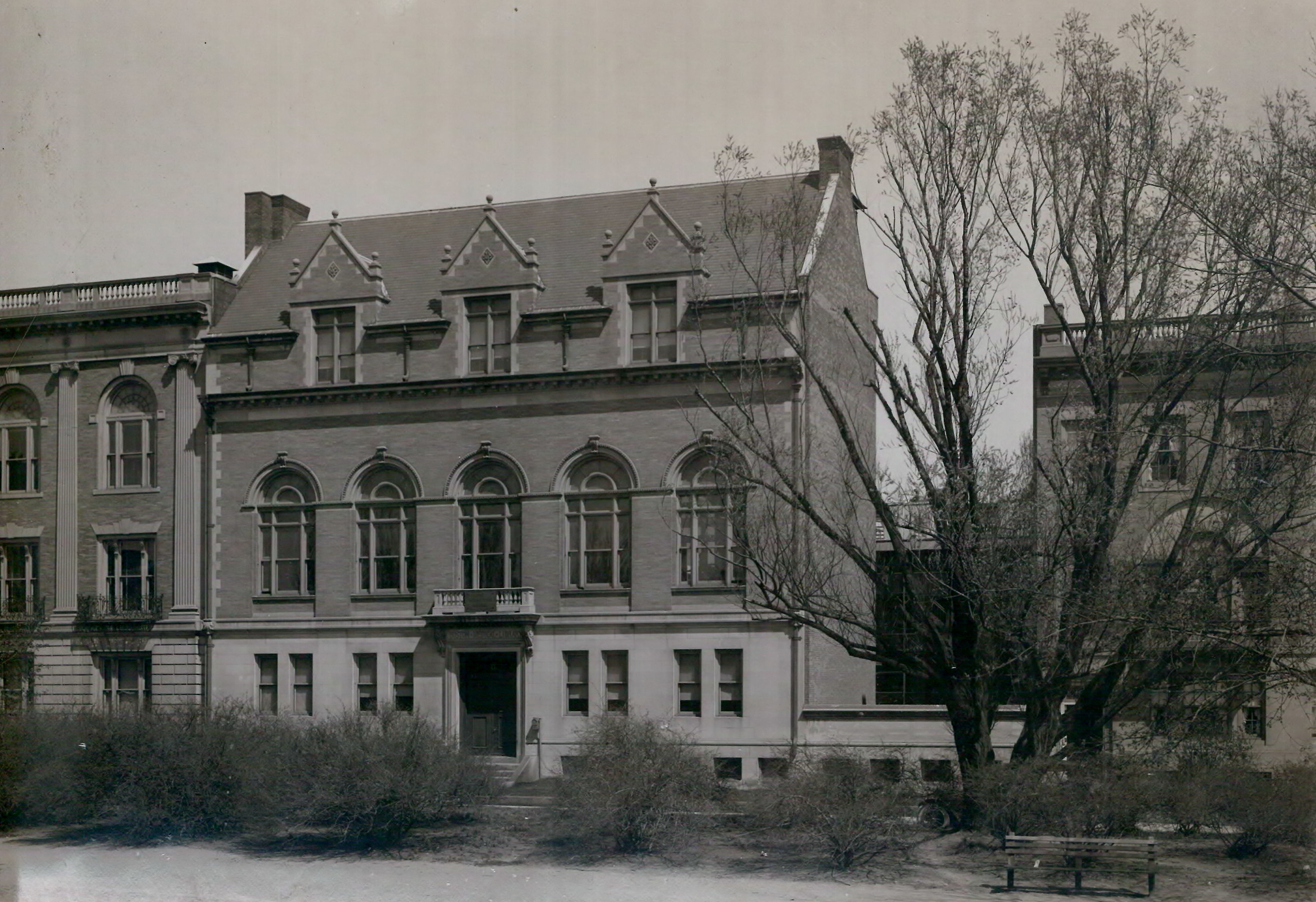By Dan Hinchen
Around the Neighborhood – #8 the Fenway
These days, the Historical Society is hemmed in by institutions devoted to the study of music. Our neighbor to the east on Boylston Street is the Berklee College of Music. Around the corner to our southwest the New England Conservatory occupies several buildings. But, in looking through some old photos recently, I found that a very different group once rubbed shoulders with the MHS on the Fenway.
The second iteration of the Boston Medical Library was founded in 1875, thanks mainly to the efforts of the then 30-year-old Dr. James Read Chadwick with tremendous support from the older Dr. Henry Ingersoll Bowditch. Beginning in December 1874, these two men and many other prominent Boston doctors held several meetings and published circular letters to gain support for the founding of a new medical library in the city. Once there was enough support, Chadwick drew up a constitution and by-laws for the new library and, in October of 1875, the Boston Medical Library opened in two rooms at No.5 Hamilton Place in downtown Boston. It would take only three years for the rooms to become inadequate for the Library’s needs.
In February, 1878, the Boston Medical Library Association began making appeals for help in acquiring a new space. The property they purchased was located at 19 Boylston Place, previously both the home of Dr. Samuel G. Howe and a boardinghouse. This spot served as the Library headquarters for the next 23 years until the space was outgrown once again. In his History of the Boston Medical Library¸ Dr. John Farlow noted that “There was no doubt that No.5 Hamilton Place was outgrown in 1878, and No. 19 Boylston Place was outgrown in a still greater degree in 1900. How the library ever continued to exist and serve its members in the overcrowded quarters, seems more or less of a wonder, as we look back on it.”[i]
In May 1899 members of the Library were asked to decide between two parcels of land on which to construct a new building. At the meeting, a committee presented brief statements advocating for either a lot at St. Botolph and Garrison Streets or a lot on the Fenway. Regarding the lot on the Fenway, the committee stated:
On the Fenway we can buy two (or three) lots facing west by south, and next the Historical building. The western light will be very strong on the front. We can build fifty feet front by one hundred deep. The rear is tolerable, but not attractive. The front view is unsurpassed. It will be quiet, clean, bleak. It will appreciate in value of land. We cannot build a symmetrical building, without wells and irregularities. We are limited to seventy feet in height on the front. We may be allowed to carry the rear higher for a book-stack. We must buy a third lot, and keep it wholly or partially unoccupied for side windows and for future growth. We shall have a building twice as long as it is wide, and with a dark centre, unless we have plenty of side windows.[ii]
With a vote of 53 for and 19 against, the Association decided in favor of the Fenway lots. A building committee composed of Drs. John Collins Warren, James Read Chadwick, and Farrar Cobb selected Shaw and Hunnewell as architects. In November 1899, the committee awarded the $86,000 contract for erecting the building to the McNeil Brothers. They also gave contracts for heating, bookstacks, wiring, and an elevator well with room for the machinery. By 12 January 1901, the Library opened to the public with a dedication occurring that evening, just two years after the completion of the MHS’ home at 1154 Boylston Street.
The Boston Medical Library in 1919 at 8 Fenway. A portion of the MHS is seen on the left. What do you think happened to the planned side windows? (“Boston Medical Library” Unknown Photographer, 1919. From the Massachusetts Views collection. Massachusetts Historical Society.)
The Boston Medical Library remained at #8 Fenway for 64 years until the Library closed its doors on 14 June 1965. Over the next two all of its holdings were removed and merged with the collection of Harvard’s newly built Francis A. Countway Library of Medicine. On 16 June, the Countway opened to readers.
On 15 January 1964, the Boston Medical Library trustees agreed to sell their building to the neighboring Boston Conservatory of Music for the price of $300,000. The actual sale did not occur until after the move to the Countway in July 1965, and the Library did not officially vacate the property until 2 September.[iii]
If you are interested in finding out more about the history of the Boston Medical Library you can search our online catalog, ABIGAIL, to see what materials we have relating to it. In addition to several printed volumes relating to the Library, the MHS holds significant collections of materials related to many early members of the Library, including Henry Ingersoll Bowditch, Oliver Wendell Holmes, John Collins Warren, and Charles Pickering Putnam.
[i] Farlow, John W., The History of the Boston Medical Library, Norwood, Mass.: The Plimpton Press, 1918.
[ii] Ibid.
[iii] Garland, Joseph E., The Centennial History of the Boston Medical Library, 1875-1975, Boston: Trustees of the Boston Medical Library, 1975.


